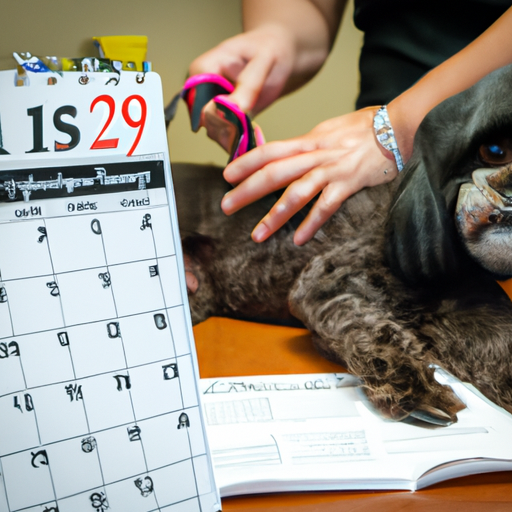Understanding Your Dog’s Nail Trimming Needs
Understanding your dog’s nail trimming needs starts with recognizing the signs of discomfort. If you hear a clicking sound as your dog walks on a hard surface, or if your dog starts to limp, these may be indications that it’s time for a trim.
The frequency of trimming depends on your dog’s lifestyle and breed. Active dogs who often walk on hard surfaces may require less frequent trimming as the hard surface naturally wears down the nails. On the other hand, smaller breeds or less active dogs might need their nails trimmed regularly.
In general, a good rule of thumb is to trim your dog’s nails every 3 to 4 weeks. But remember, every dog is unique and may require different care routines.
The Importance of Regular Nail Trimming
Keeping your dog’s nails trimmed is more than just about aesthetics; it’s about their health and comfort.
- Avoiding Pain and Discomfort: Long nails can cause discomfort, especially when walking or running.
- Preventing Injuries: Overgrown nails can become split or torn, which can be extremely painful for your dog.
- Maintaining Good Posture: Long-term neglect of your dog’s nails can lead to a change in their walking posture, potentially causing joint issues or back pain.
How to Trim Your Dog’s Nails
If you’re new to trimming your dog’s nails, it can be a daunting task. However, with patience and practice, you’ll become more comfortable with the process.
- Make sure your dog is calm and comfortable.
- Hold your dog’s paw firmly but gently.
- Using a dog nail trimmer, cut off a small bit of the end of each nail.
- Be careful not to cut into the quick (the pink part of the nail), as it can cause bleeding and pain.
- If you happen to cut the quick, apply some styptic powder to stop the bleeding.
- Reward your dog with a treat!
Choosing the Right Nail Trimming Tools
| Trimmer Type | Description | Best For |
|---|---|---|
| Guillotine | Has a hole where you insert the nail, then a blade slices off the end when you squeeze the handles | Small to medium-sized dogs |
| Scissor | Works like a regular pair of scissors, but has a notch to hold the nail in place | Larger dogs with harder nails |
| Grinder | Files down the nail instead of cutting it, which can be more gradual and less stressful for some dogs | Dogs that are scared of clippers or have had a previous nail-trimming trauma |
Frequently Asked Questions
Q: What if my dog is scared of getting their nails trimmed?
A: Start slow and use lots of positive reinforcement. You could also consider using a grinder instead of clippers, which might be less intimidating.
Q: How can I tell if I’m cutting into the quick?
A: The quick is the pink part inside the nail. If you can’t see it clearly, just trim a little bit at a time.
Q: My dog’s nails are black and I can’t see the quick. What should I do?
A: For black nails, you’ll need to make several small trims and look at the cross-section of the nail after each cut. Once you see a gray or pink oval starting to appear, stop cutting.
Remember, as a caregiver for your dog, it’s your responsibility to ensure their comfort and health. Regular nail trimming is a simple but crucial part of that.



